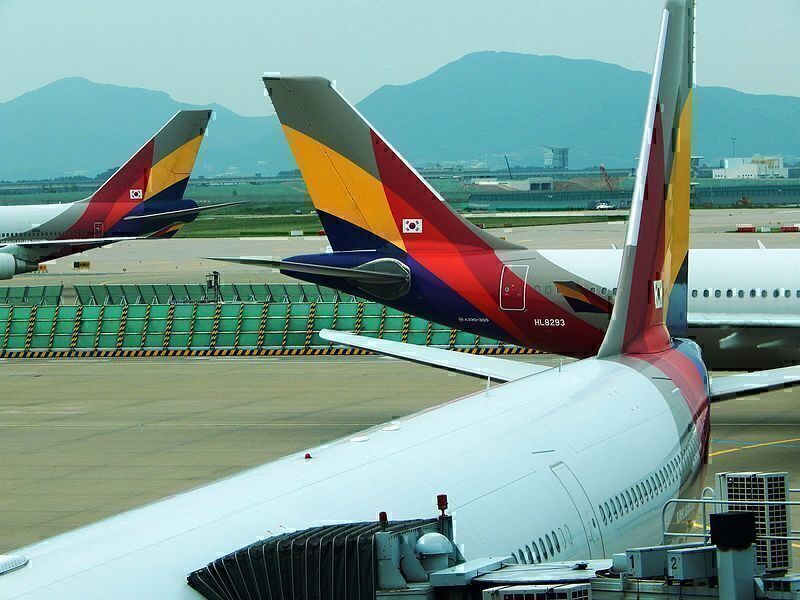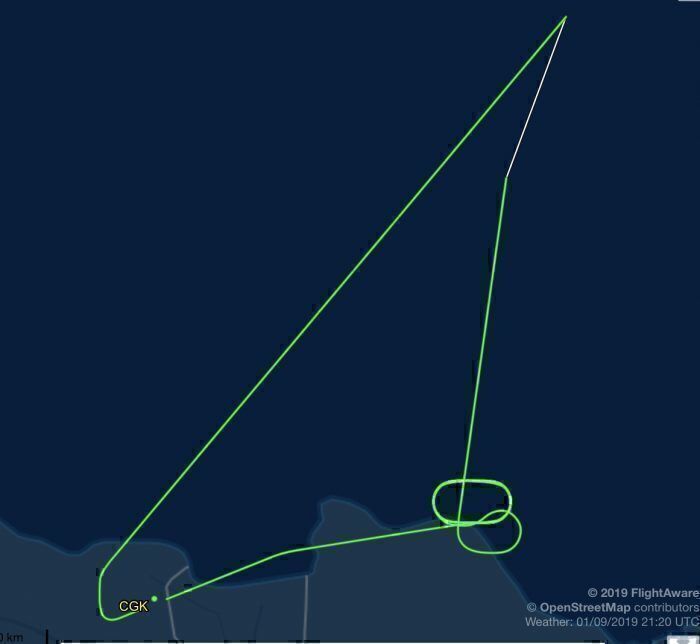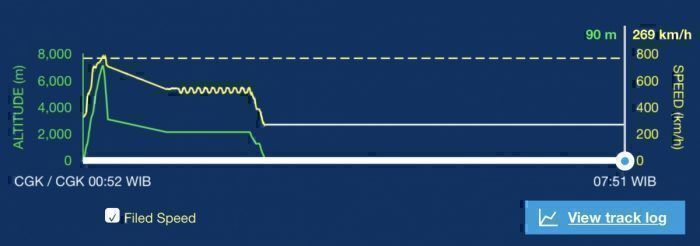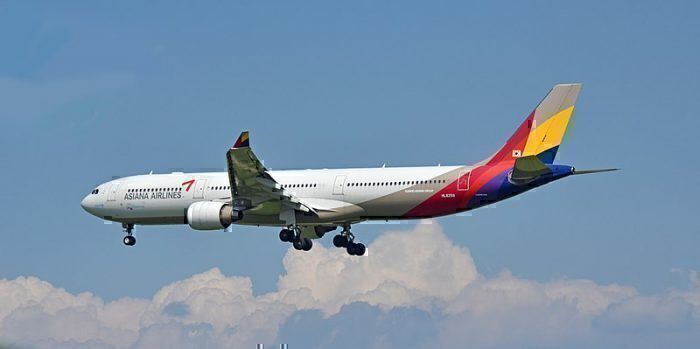An Asiana Airbus A330 was forced to turn back to Jakarta in the early hours of yesterday morning, Monday, September 2nd, after the aircraft failed twice to properly pressurize.
According to a report in the Aviation Herald, the aircraft, HL8259, a seven-year-old A330-300, was operating OZ762 from Jakarta to Seoul. The flight left Jakarta’s Soekarno Hatta International Airport at 00:25 yesterday morning.
290 passengers and crew were on-board. According to the Aviation Herald, the crew stopped the climb at 23,000 feet and dropped back to 9,000 feet because the aircraft wasn’t pressurizing correctly.
After holding at 9,000 feet for nearly a quarter of an hour, the pilots climbed again, this time to 13,000 feet. Again the aircraft failed to correctly pressurize. The pilots dropped the plane to 7,000 feet, circled for over an hour to burn off fuel, and diverted back to Jakarta, landing safely at 03:12 Jakarta time.
It was also reported that there was a problem with the air conditioning. There was apparently work being done to the air conditioning units prior to the plane’s initial departure. Once inflight, passengers reported the air conditioning still not working.
Back in the air
Flight Aware has the HL8259 sitting on the ground in Jakarta for about 15 hours yesterday. However, the problem appears to be rectified. The aircraft flew the delayed OZ762 to Seoul later yesterday. The flight departed at 19:22 last night and flew to Incheon without incident.
The aircraft is scheduled to operate a return Incheon-Phuket-Incheon later on today.
How cabin pressure works
Because humans are designed to operate best at ground level, our bodies don’t handle the thin air of high altitudes well. While a mountaineer might experience dizziness, nausea, headaches, and have trouble breathing, planes fly a lot higher. Aside from extreme discomfort, the risk of falling unconscious or worse makes high altitude non-pressurized flying a no go zone.
Aircraft cabins are effectively pressurised tin cans. It’s a simple analogy but it works. Inside at 36,000 feet is the dense air humans need. Outside the air is thin and smooth and the environment is uninhabitable.
A plane’s engines provide the pressurized air we need. Intake air is compressed by vaned motors behind the jet’s big engine fans. Compression makes the air hotter. Where heat and pressure peaks, the pressurized ‘bleed’ air is split into two streams. Some is streamed over the wings as a de-icing tool, while some is fed towards the passenger cabins.
Pressurized cabin bound air needs to be cooled. Intercoolers are used to do this. In the plane’s manifold, this fresh air is mixed with recirculated cabin air. The aircraft’s systems are able to automatically mix warm and cool air to maintain a cabin temperature comfortable for humans.
To keep the cabin comfortable for us, incoming cabin air is regulated by opening and closing an outflow valve. Air can be released at a rate determined as acceptable by the aircraft’s sensors. Air and Space Magazine uses the analogy of a balloon - air leaks out but the balloon is also being continuously inflated.
Simple but complex
The physics behind aircraft cabin pressure at both simple and fiendishly complex. It’s something we all take for granted until our ears start to pop on the occasional descent. But without effective cabin pressure, safe operation of aircraft at anything beyond the lowest altitudes becomes an impossibility.
As yesterday’s turnaround of the Asiana Airlines flight attests, without working cabin pressure, the plane is going nowhere.
Simple Flying approached Asiana Airlines for comment but had received no response prior to publication.




